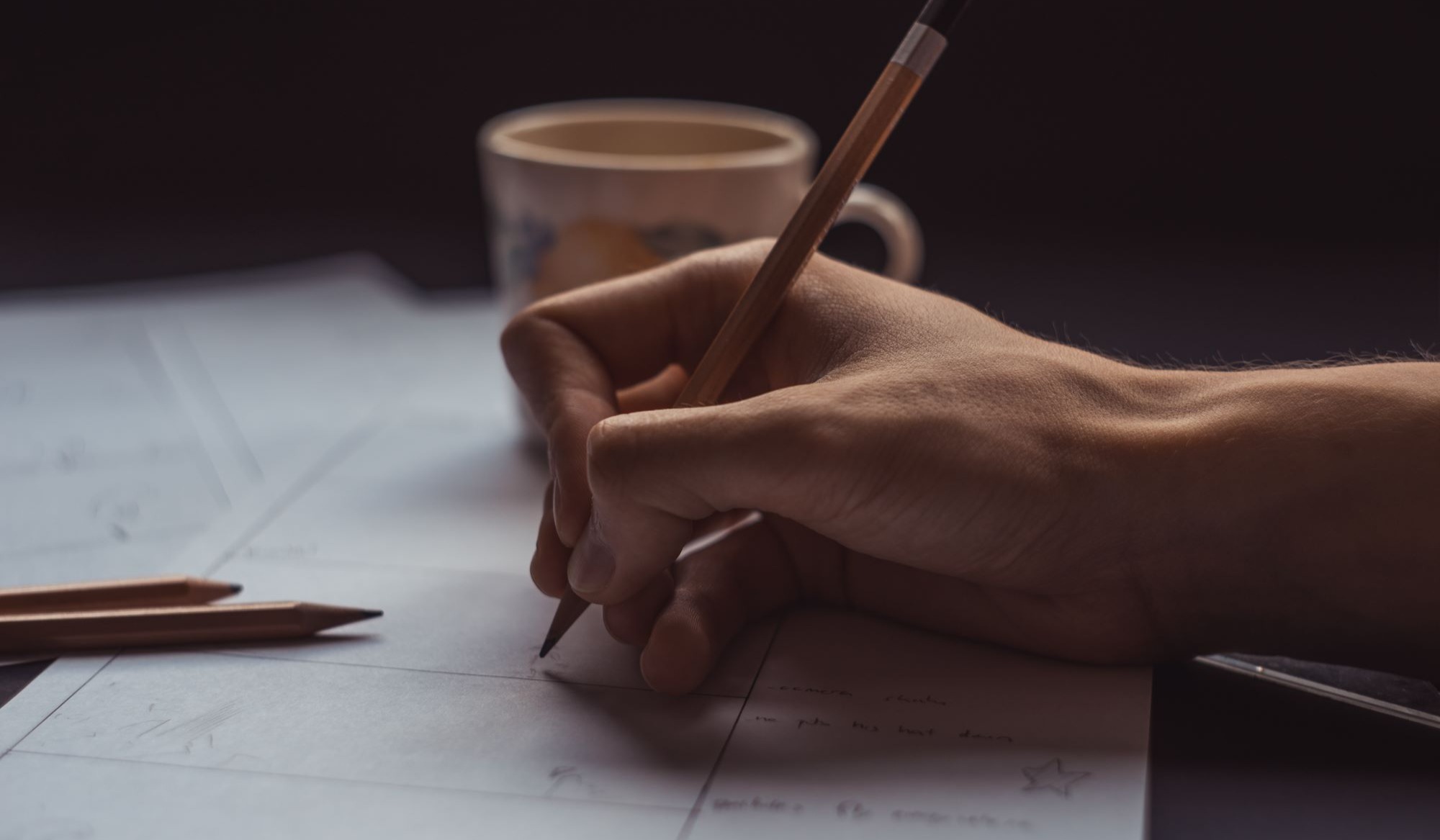Jump to section
What is a storyboard?
An animation storyboard is a series of sketches or drawings that detail the sequence of what’s being animated. It helps the animator by visualising how the artwork will appear through motion.
Each frame in a storyboard should have captions describing the visuals and corresponding audio. For a filmed video, this would also include any camera movements.

The storyboarding process
The process of how we create a storyboard for our clients often depends on who we’re working with, the type of animation they’re looking to create and how familiar they are with the storyboarding process. We can do anything from rough initial sketches to full colour storyboards which contain elements that can be used as assets for the animation itself.
But as a general rule, this is the six-step process we tend to follow:
- Create a shot-breakdown: Once we’ve reviewed the animation script, we identify the important elements to create a shot-breakdown of your story. This might include things like character positions, movement, background, text, and the timeline of when the events in your animation will take place.
- Generate concepts: Sometimes clients will have a pre-set animation style for us to follow. But quite often this stage will involve interpreting a set of client brand guidelines to develop a new animation concept. Once we’ve developed this concept, we present it back to you using scamps or moodboards to make sure that everyone agrees on the chosen style before we move forward.
- Create the first few style frames: Whether we’re creating a storyboard digitally or traditionally, we’ll put together a selection of frames to present back to you. These frames will give a good overview of how the animation will come to life, clearly illustrating things like characters and background.
- Add directional notes to the different frames: Once we’ve depicted your animation through a handful of style frames, we then incorporate movement. Adding motion will depict how your animated video will unfold, helping you get a feel for the impact, momentum and pacing of a scene. We also add in any dialogue or voiceover narration to these frames at this stage to illustrate how it all fits together.
- Share initial frames with client for feedback: Once we’ve got our initial selection of style frames together, we share these with you for feedback. This stage is very important, as it ensures that all ground has been covered and that everyone is happy with the overall style before moving forward.
- Complete the full storyboard: As soon as we’ve received approval, we get cracking with the rest of the storyboard!
In short, a storyboard is an essential tool in planning how the words from your script will translate into a visual story. But if the process of creating a storyboard feels a bit daunting, that’s where we come in.
We’ve created several storyboards for a wide range of animation styles over the years. So, if you’re looking for support with developing a storyboard that will help bring your animation script to life, get in touch.
Originally published:
June 9, 2022
Updated:
November 29, 2023





